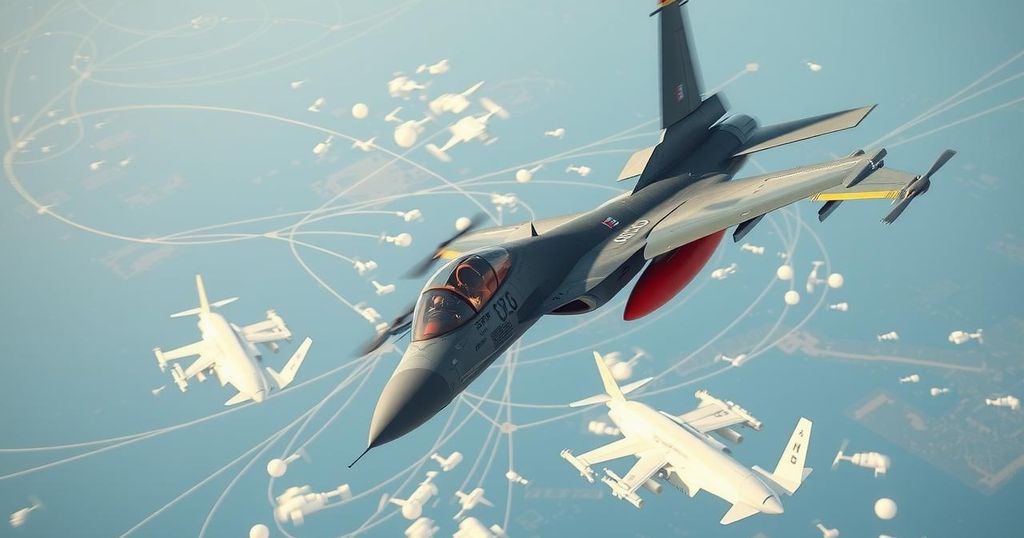Rising Tensions in Syria: F-16 Shoots Down Turkish Drone, Signs of NATO Friction Surface
The shootdown of a Turkish Bayraktar TB2 drone by Syrian Democratic Forces signals escalating tensions between the United States and Turkey, potentially indicating a conflict among NATO allies in Syria. The SDF’s increased effectiveness in countering Turkish drone operations and the U.S. military’s enhanced presence exacerbate these conflicts, raising concerns over future engagements.
The recent shootdown of a Turkish Bayraktar TB2 drone by Syrian Democratic Forces (SDF) raises significant concerns about escalating tensions between the United States and Turkey in Syria. This incident, reported on January 1, 2025, alongside previous hostilities, suggests a potential NATO conflict amid differing strategic interests. The SDF’s increasing proficiency in neutralizing Turkish drones indicates a shift in the battlefield landscape, where NATO allies may find themselves on opposing sides.
The shootdown occurred near the Karakozak Bridge in northern Raqqa, part of ongoing tensions in the region. The SDF stated, “At exactly 1:00 PM this afternoon, our fighters successfully downed a Turkish Bayraktar TB2 drone in the Karakozak Bridge area.” With three Turkish drones reportedly brought down in the prior month, the SDF’s capability to thwart Turkish aerial operations is becoming a focal point, heightening geopolitical frictions.
This situation is compounded by the U.S. Air Force’s F-16 incident in October, wherein an American jet shot down a Turkish drone that posed a threat to U.S. forces in northeastern Syria. U.S. officials noted that attempts were made to contact Turkey before taking military action, marking a rare instance of force among NATO members, which highlights the fragile alliances at play.
Furthermore, accusations from the SDF against Turkey and its allies for violating ceasefire agreements amplify the tensions, as the SDF condemned the escalation of aggression. Despite efforts to mediate, conflicts persist, exacerbated by reports of the U.S. enhancing its military presence in northern Syria, including the movement of troops and equipment towards Kobani, a key conflict zone. Videos circulating on social media reflect this strategic realignment by the U.S.
The ongoing scenario underscores the complexity of U.S.-Turkey relations as both nations grapple with their respective interests in Syria. The precarious balance continues to evolve as military engagements intensify, making the prospects of a deeper NATO confrontation increasingly plausible.
The geopolitical landscape in Syria is marked by various factions with differing objectives, primarily involving the United States, Turkey, and Kurdish forces represented by the SDF. The U.S. has supported the SDF as a primary ally in combatting ISIS, while Turkey’s military operations target Kurdish groups it views as threats to its national security. Recent incidents involving drone warfare have escalated tensions within this framework, indicating the risks of conflict between NATO allies as their interests diverge in this volatile region.
In summary, the shootdown of the Turkish drone by SDF forces not only reflects the growing effectiveness of the SDF but also signals the increasing complexity of NATO alliances in Syria. With historic incidents of military engagement between U.S. and Turkish forces and ongoing violations of ceasefire agreements, the potential for deeper conflict among NATO members appears to be a pressing concern. The U.S. decision to escalate its presence in northern Syria further complicates this intricate geopolitical situation.
Original Source: www.india.com




Post Comment